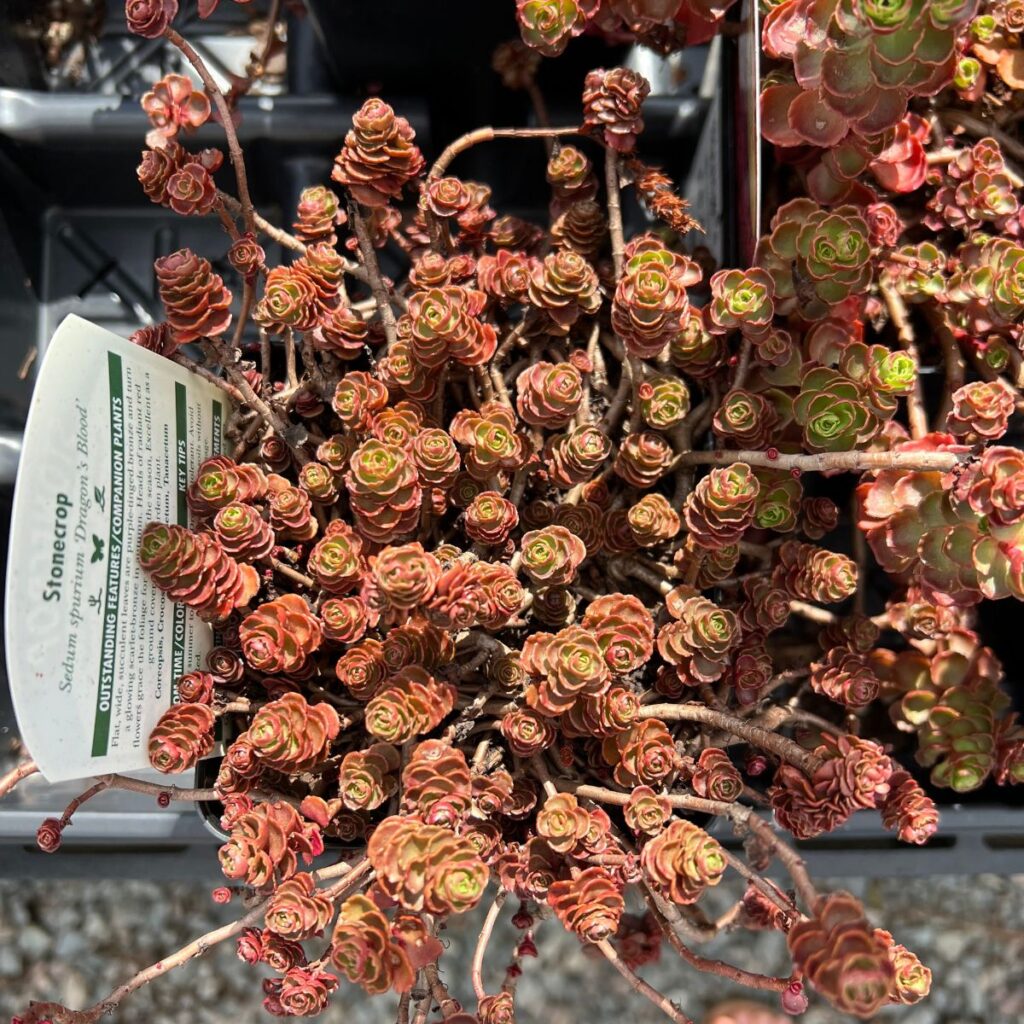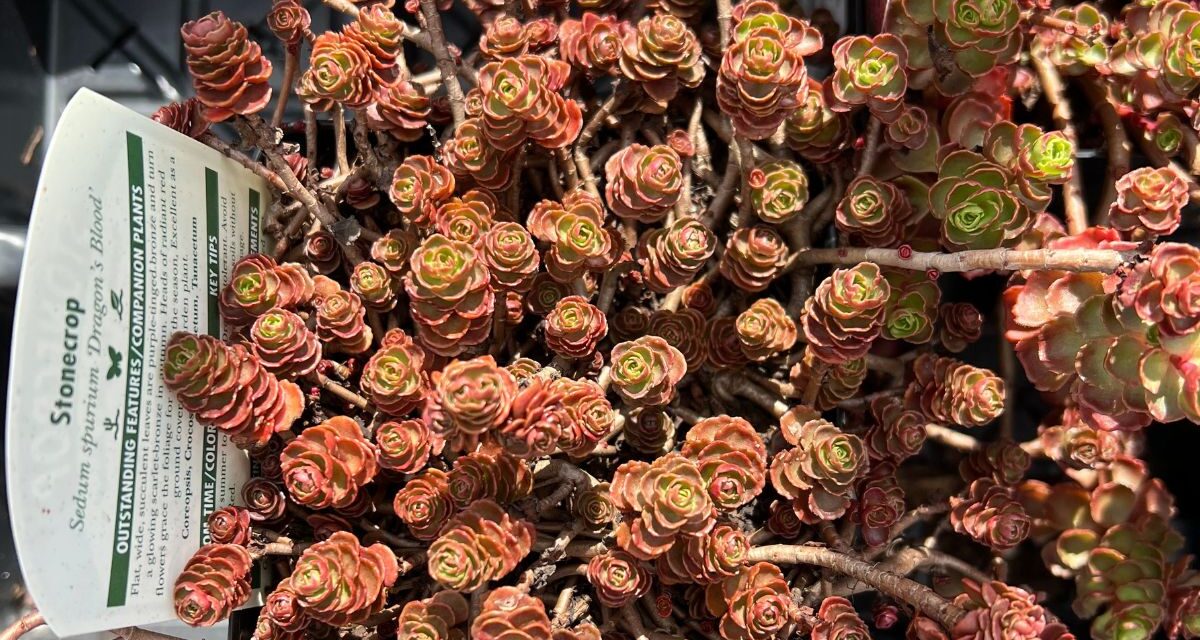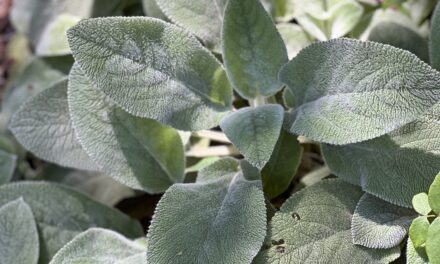People who love flowers but don’t have a green thumb want characteristics that not many plants have: easy to grow, sprawling, hardy in poor soil, and a fresh look all year long. Most of these people will turn to succulents for their needs, but there are hundreds or even thousands of types of succulents. Check out the Dragon’s Blood sedum succulent to hit all your needs.
Also known as Causacian stonecrop or two-row stonecrop because leaves grow along the stem in two columns, Dragon’s Blood works well for gardeners of any level.
Dragon’s Blood:
- Can provide ample ground cover.
- Likes full sun but will tolerate some shade.
- Is drought tolerant.
- Does not need as much care as other plants, or even other varieties of succulents.
- Can grow in most places in the United States.
- Best in USDA Zone 3, CFIA Zone 2A
- Height: 10 cm or 4″
- Spread: low growing creeping to around 60cm, or 2′

Plant Characteristics
Dragon’s Blood is low-growing and sprawling, which means that it is the perfect succulent for ground cover because it can grow up to 18 inches wide.
Stems of Dragon’s Blood grow small, thick, flat leaves that are one inch long. The tips of the leaves are a purple-red color and become completely purple-red by the fall.
In late summer to early fall, Dragon’s Blood has small, star-shaped flowers that are less than an inch wide. The flowers range in color from pink to red that grow in small clusters.
Light Requirements
Dragon’s Blood grows best in full sunlight but will also tolerate partial sun or light shade.
Since this plant is used as ground cover, one might assume that it may end up under canopy cover from trees or other tall-growing plants. You should plant Dragon’s Blood where it will get enough shade to grow but also know that it will survive being shaded by other plants.
Water Requirements
Dragon’s Blood grows best in well-draining soil.
You want to make sure that you do not overwater Dragon’s Blood. Like many succulents, you should only water your Dragon’s Blood when the soil feels try to the touch.
Too much water could lead to root rot or bug infestation. Plus, Dragon’s Blood is drought tolerant, so overwatering could also lead to your succulent dying.
The best rule of thumb is to water your succulent weekly or bi-weekly. It is difficult to say how much water the plant needs each time, but all you need to do is thoroughly soak the soil each time you water it.
How To Care For Dragon’s Blood Sedum
Dragon’s Blood does not need much care to grow well.
Here are some things to remember when growing Dragon’s Blood (and most other succulents):
- Do not overwater Dragon’s Blood
- Do not crowd Dragon’s Blood when planting
- Leave at least 12 inches of space between Dragon’s Blood plants
Where Is The Best Place To Plant Dragon’s Blood
Dragon’s Blood is a hardy plant, but you can also choose the best environments to grow it in.
Here are some of the best instances and conditions to grow Dragon’s Blood in:
- In an area with dry soil
- Where the plant can receive full sunlight, or at least mostly full sunlight
- Hardiness Zones 3-9. This, however, means that it can easily grow in most of the continental USA.
- Areas with sandy or gravelly soil
Consider the areas where other plants fail to thrive in to plant Dragon’s Blood because it can grow in nearly any environment but does do better in some places rather than others.
Is Dragon’s Blood Sedum A Good Ground Cover
Dragon’s Blood is one of the best option if you want a succulent that covers the ground.
After perusing different succulent varieties, you may come to the conclusion that most succulents don’t provide ample ground cover. Succulents like cacti grow up but not out. Other types such as Aloe Vera and Snake Plants have long, leafy stems, but they won’t cover the ground either.
You should try Dragon’s Blood if you want to cover ground. As mentioned earlier, Dragon’s Blood can grow up to 18 inches in diameter – and that’s just one plant! Plant a few more in your garden, and you’ll quickly lose sight of the dirt.
Does Dragon’s Blood Sedum Need Full Sun
If you want Dragon’s Blood to go to its fullest ability, then yes, you will need to plant Dragon’s Blood in full, hot sun.
Dragon’s Blood is, however, a hardy plant, so you should not expect your Dragon’s Blood to die off in partial shade.
What Happens To Dragon’s Blood Sedum In Winter
Dragon’s Blood goes dormant in winter. Dragon’s Blood is a desert succulent, so it prefers warmer weather.
Once autumn passes and temperatures begin to drop, you will likely see that your Dragon’s Blood will lose its leaves. This doesn’t mean, however, that your plant has completely died off.
Does Dragon’s Blood Sedum Come Back Every Year
Dragon’s Blood is dormant in the winter, but Dragon’s Blood is perennial, so it will come back every year.
Some plants die off every year and need to be replanted, but remember: Dragon’s Blood is one hardy plant.
When spring rolls around again, your Dragon’s Blood will again grow its green and red leaves back and continue growing.
How To Propagate Dragon’s Blood Sedum
Propagating Dragon’s Blood is as easy as propagating any other succulent.
Here’s what you need to do if you want to propagate your Dragon’s Blood:
- Find a stem that is about 6 inches long and snip it off your plant with a clean pair of scissors.
- Place your cutting in a jar with water in a sunny area, changing the water every few days.
- Wait a few days or weeks until roots start to form.
- Once your roots develop, you can plant your cutting.
Dragon’s Blood may be one of the easier plants to manage, but that does not mean that Dragon’s Blood is any less attractive in your yard, rock garden, or pot inside. Try out Dragon’s Blood next time you’re looking to plant something new, no matter if you have the greenest thumb out there or if you’re a new plant parent.



